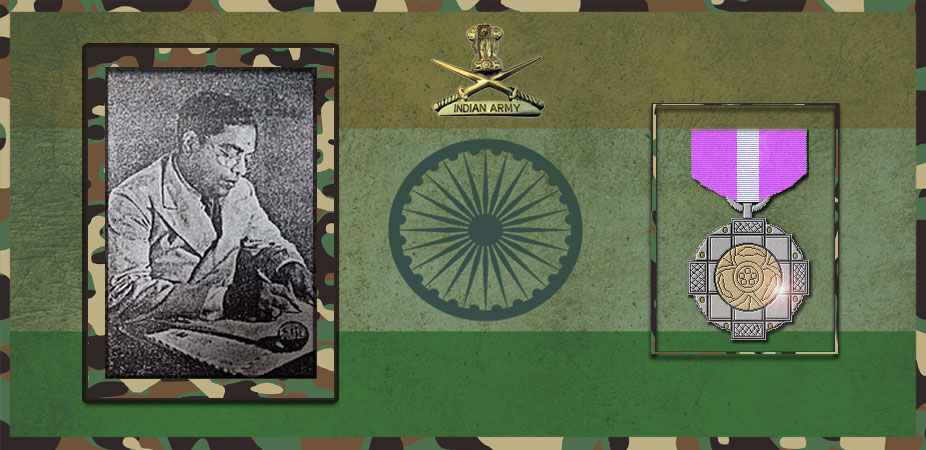Let's salute to our Indian Army together, We are proud to be Indian.
Let's salute to our Indian Army together, We are proud to be Indian.

Calambur Sivaramamurti, (1909–1983) was an Indian museologist, art historian and epigraphist who is primarily known for his work as curator in the Government Museum, Chennai.and Sanskrit scholar. His entire life has been devoted to the study and exposition of various aspects of Indian art. Apart from authoring several monographs, guide books on Indian art, he also wrote a seminal work on South Indian epigraphy.
After a brilliant academic career, C. Sivaramamurti entered the museum profession as curator for Archaeology in the Madras Museum. He then joined the Archaeological Survey of India as Superintendent, Archaeological Section, Indian Museum, Calcutta, whence he came over to the National Museum as Keeper and rose as Assistant Director and finally became the Director. Closely associated with the International Council of Museums he was on its executive committee and was Chairman of the Indian National Committee of ICOM. He conducted pioneering research and wrote extensively on various subjects during his tenure at the Indian national Museum.
Eminent archaeologist, zoologist and student of archaeology, Frederic Henry Gravely, along with the Curator Dr. C. Sivaramamurti, ensured in 1938 that the antiquities and industrial art collected by the Museum was organised effectively, into a collection that exists even today. His monumental book L’Art en Inde originally published in French earned the Dadabhai Naoroji Award. The book is available in German, English, Spanish and Italian.
Dr.C.Sivaramamurti was the first fellow of the Jawaharlal Nehru Memorial Fundwhen it was instituted, as he was specially chosen by the Trustees of this Fund in an endeavour to set a standard to Indian scholarship.He did a special exhaustive study of Nataraja,the dancing form of Siva, in all aspects as represented in Art,thought and literature.The product of two years of efforts was a monumental work,”Nataraja in Art,Thought and Literature”, which he dedicated to his parents. Nataraja in Art, Thought and Literature is acclaimed as his major achievement. First published 1974, it was 412 pages with 22 colour plates and over 250 monochrome illustrations. Nataraja as a theme represents life force itself. The ancients visualised Nataraja as a manifestation of the cosmic energy symbolising the three aspects of creation, preservation and destruction. Chapters include: Natya, The Significance of Siva’s Dance, Karanas Presented in Siva’s Tandava, Karanas Presented by Vishnu as Krishna, The Vedic Roots of the Concept of The Great Dancer, Nataraja Pictured in literature, Varieties of Nataraja as Described in Silpa Texts, Nataraja Form in Sculpture and Painting, The Nataraja Concept Beyond Indian Frontiers.
Dr. Sivaramamurti has been responsible for popularising epigraphy and numismatics, sculpture and paintings from an approach through literature giving literary parallels. His love for Sanskrit and art, his aesthetic taste and capacity to draw, paint and sculpt helped him to achieve his purpose of such a study of art and literature. He was a frail man with conspicuous vibhuti and tilak on his forehead. Dr. Sivaramamurti belonged to the lineage of the great Appayya Dikshita.He was the son of Calambur Sundara Sastri, a civil servant, a great Sanskrit scholar of his times and author of a great kavya in Sanskrit,’Sundara Ramayana’. C.Sundara Sastri was an ardent devotee of Rama and as if by divine will his son, Sivaramamurti was married to Sampurna, the granddaughter of the great Ramayana exponent Paruthiyur Krishna Sastri and daughter of Pattabhi Rama Sastri, then District educational Officer of Tanjore. They had two sons Sundararamamurti and Krishnamurti.
Dr. Sivaramamurti died in 1983 of a heart attack during a lecture on the specific features of a rare Nataraja icon.
Dr. Sivaramamurti is an Honorary Fellow of the Royal Asiatic Society of Great Britain and Ireland. Sri Sankaracharya the great Chandrasekharendra Saraswati Swamigal of Kanchi Kamakoti Peetha conferred on him the title of Vichitrachitta- meaning ‘the curious minded one’.The great Pallava ruler of the 8th century from south India,Mahendravarman, held this epithet ‘vichitrachitta’, as described by him in his inscription in the rock-cut temple of the Trinity, Brahma,Vishnu and easwara(siva) at Kudumiamalai. He was awarded by the President of India,the Padma Sri in 1968 and the Padma Bhushan in 1975. He travelled widely, participated in international seminars, delivered important lectures at the invitation of several universities, which have been published as books.
He delivered important endowment lectures at many universities in India. He has over thirty-four books and innumerable papers on sculpture, painting, architecture, iconography, epigraphy, numismatics and literature to his credit. He was honoured with a number of awards during his lifetime, and in view of his contribution to Oriental Research, in 1981, the Asiatic Society of Bombay posthumously awarded a special Campbell Memorial Gold Medal.